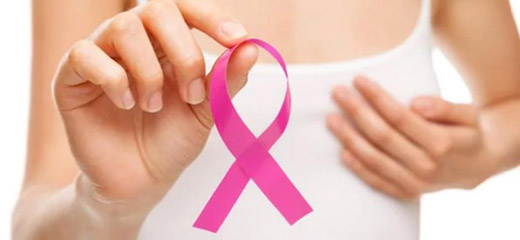
Medical care of women at risk
Some women have a higher personal or hereditary risk of developing breast cancer. Recommendations have been developed for these situations.
For women with a BRCA 1 or 2 mutation (or who have a very high risk of developing breast cancer (> 20%)).
For these patients, screening begins earlier, with annual clinical examinations from the age of 20, then annual mammograms - ultrasounds - MRI from the age of 30.This management only concerns patients who have benefited from an oncogenetic consultation, who have resulted in the diagnosis of a mutation or a high risk calculation. Proposals can also be made for the patient's relatives.
For women at "high" risk.
Proposals were developed by HAS in 2014 (Breast cancer screening and prevention - High Authority of ... www.has-sante.fr ›jcms› screening-and-prevention-of-breast-cancer.) . They are summarized below.• If you have a personal history of breast cancer or ductal carcinoma in situ
HAS recommends that a clinical examination be performed every 6 months for 2 years and then annually.
An annual mammography, unilateral or bilateral depending on the type of surgery performed, must be performed, in association with a possible breast ultrasound depending on the result of the mammography.
• In the event of a history of high-dose medical chest radiation (including history of radiation for Hodgkin's disease)
HAS recommends that an annual clinical examination be carried out 8 years after the end of irradiation and no earlier than 20 years.
Annual breast MRI should be performed 8 years after the end of irradiation and no earlier than 30 years.
In addition to the MRI performed at the first examination, the HAS recommends performing an annual mammogram (an oblique incidence) in combination with a possible breast ultrasound.
• If hormone replacement therapy or menopausal hormone therapy is in progress
If prescribed before the age of 50 and in the absence of sufficient data to determine the risk-benefit balance of mammography, no specific radiological monitoring is recommended.
If prescribed after 50 years, no specific radiological monitoring is recommended. Women should be encouraged to participate in the national organized screening program.
• In the case of a family history of breast cancer with an Eisinger score of indication of oncogenetic consultation ≥ 3 AND initial search for mutation of the BRCA1 and BRCA2 genes not informative in the family ( that is to say in the absence of identification of a BRCA1 or 2) mutation OR initial research not carried out.
In this situation, the oncogenetician assesses the level of personal risk of breast cancer in view of the family tree and the patient's age. It can use different methods and in particular an individual risk calculation including the Boadicea score. The use of this score or other methods is reserved for exclusive professional use in the context of oncogenetics consultation.
In case of high risk:
The HAS recommends that breastfeeding identical to that carried out in women with a BRCA1 or mutations be proposed in first-degree relatives of people who have developed breast cancer or nieces by the brother of an affected person. 2. The 2009 INCa recommendation on the care of women carrying a BRCA1 or 2 mutation, which is being modified, provides, until updated:
- clinical monitoring every 6 months from the age of 20;
- annual breast imaging follow-up from the age of 30, or 5 years before the earliest diagnosis of breast cancer, consisting of an MRI examination and mammography ± ultrasound in case dense breasts, and all over a period not exceeding 2 months. The MRI scan should be done first to guide the other scans if any abnormality is detected.
In case of intermediate risk:
HAS recommends starting radiological monitoring 5 years before the age of diagnosis of the youngest breast cancer, in first-degree relatives of people who have developed breast cancer or nieces by the brother of an affected person. The modalities of this surveillance must be modulated according to the age of the patient:
- The HAS recommends carrying out an annual clinical examination from the age of 20;
- A mammography, possibly in combination with a breast ultrasound, will be performed annually before the age of 50 (and at the earliest from 30);
From the age of 50, a mammography, possibly combined with a breast ultrasound, will be offered annually or every 2 years (that is, participation in the national organized screening program). In the most difficult cases, the surveillance methods proposed to women can be discussed within the framework of a multidisciplinary concertation meeting.




